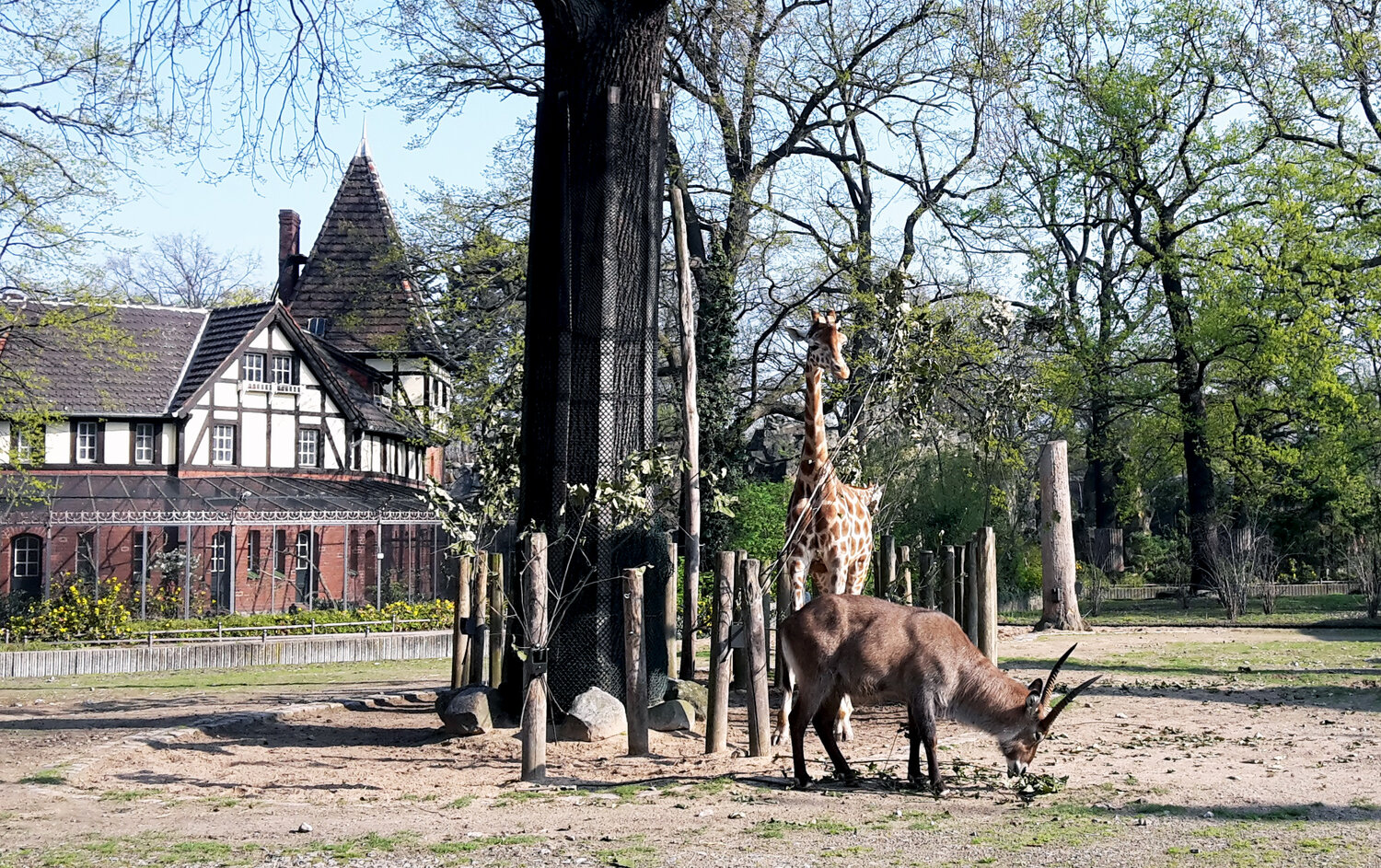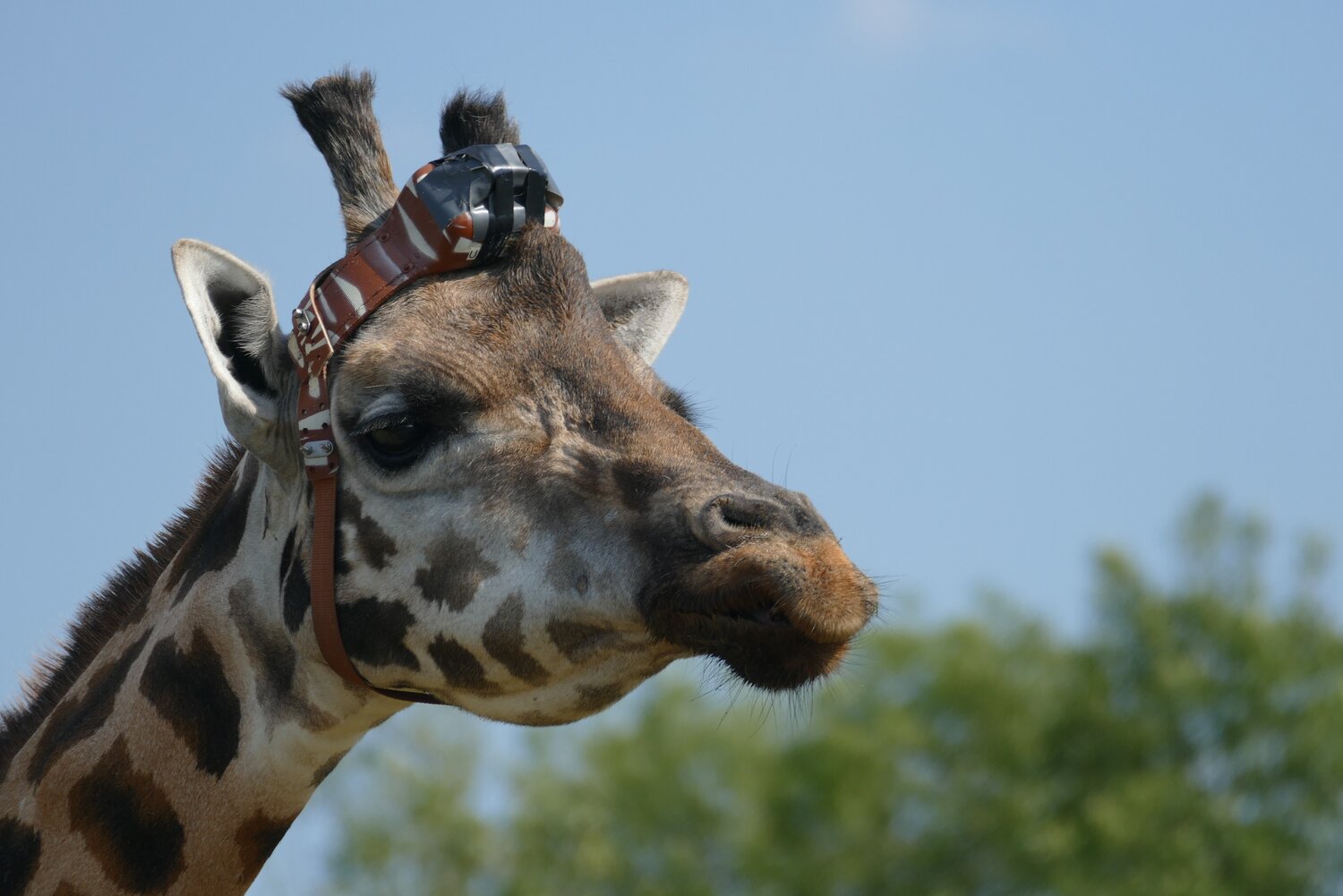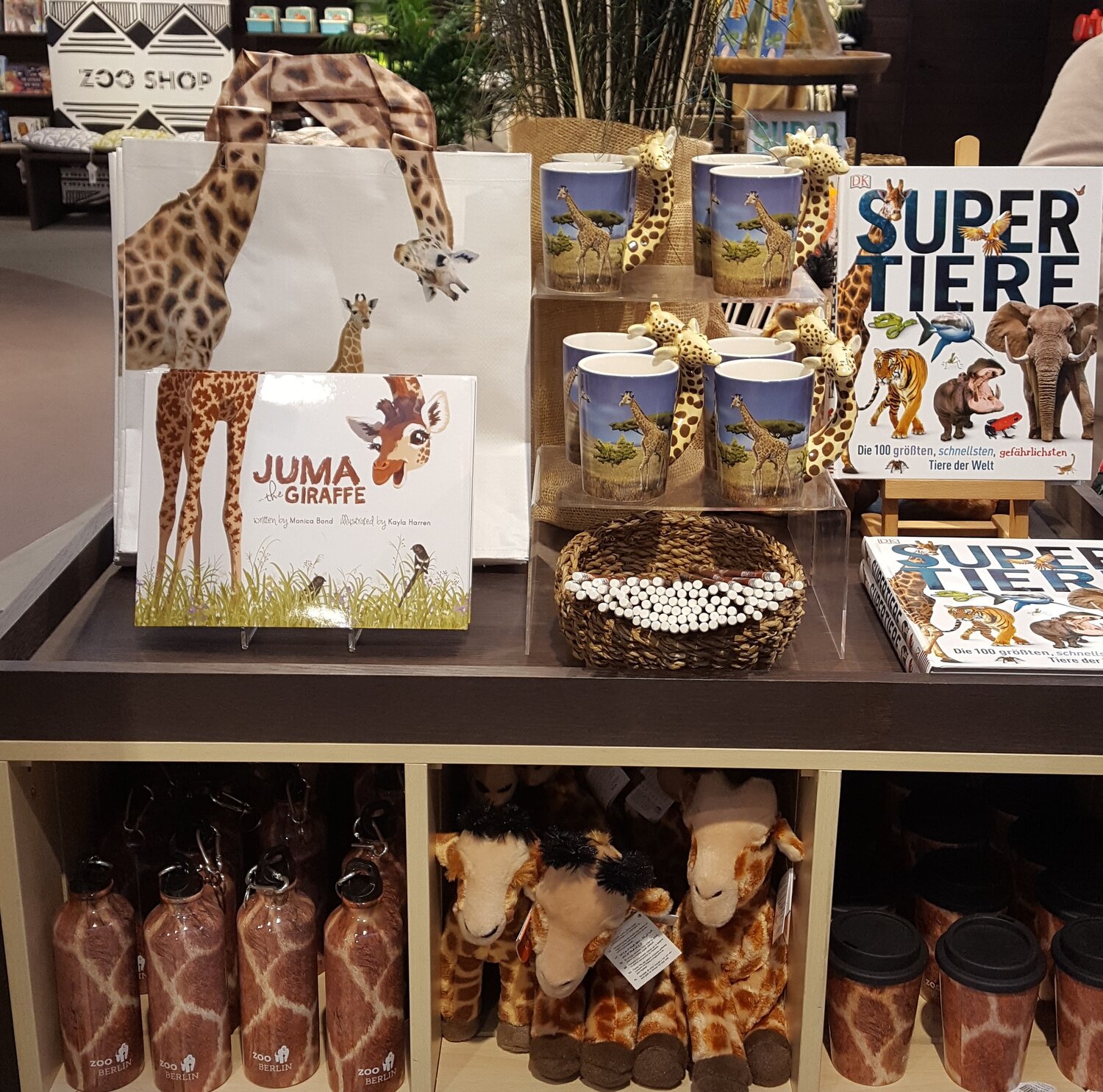If visitors spot male giraffe Max out on a stroll at Zoo Berlin today, they will probably wonder what exactly he has on his head. Is it some sort of sun visor? Or a head torch, perhaps? “Neither, actually,” replies giraffe curator Dr Florian Sicks of Tierpark Berlin. “Max is participating in an important research project to help protect giraffes in their natural habitat. He will be wearing this transmitter on his head quite a lot over the next few weeks.” The Tierpark curator and his Zoo Berlin colleague, Dr Tobias Rahde, are involved in a project led by the Leibniz Institute for Zoo and Wildlife Research (IZW), which is collecting and analysing movement data from giraffes. In the last 30 years, the world’s giraffe population has fallen by almost 40 percent. The biggest threat facing giraffes is the loss of their habitat. To better protect the mammals, researchers have fitted GPS collars to certain giraffes living in their natural environment in Africa. These collars allow researchers to find out where the animals spend most of their time, enabling them to establish suitable protected areas. As well as data regarding location, these transmitters provide information on the animals’ movements. Until now, however, researchers in Africa have been unable to use this data, as they have no way to “translate” the information into the corresponding behaviour.
This is where Max comes in. It is far easier to closely observe giraffes in a zoo environment than out on the African savannah. By wearing his research hat and being observed as he goes about his day, Max can help researchers decipher the data and provide answers to questions such as: When does he eat leaves? When is he most active? When does he take a nap? “Even in zoos, it’s not easy to find a giraffe that is suitable for this type of data collection,” explains Dr Rahde. “But as Max has such a trusting relationship with his keepers, we were able to offer our support in this project. One of our keepers worked patiently and tirelessly with him for ten months and was able to get him so well accustomed to the head collar that he hardly notices it now.” As well as Max, two giraffes at Canadian zoos are also participating in the Berlin-based research project, coordinated by IZW scientist Dr Anne Berger. Zoo and Tierpark Director Dr Andreas Knieriem is enthusiastic about the initiative: “Thanks to this exemplary joint project by Berlin’s zoological facilities, in the future researchers will not only be able to see where giraffes are in their natural habitat – they will also be able to tell what the animals tend to do at each location. This information will enable more specific protective measures to be implemented for giraffes.”
But Berlin’s zoos are not only furthering species conservation research at home; both the Zoo and the Tierpark are also helping protect giraffes living in their natural habitat. The Zoo Stiftung Berlin foundation is supporting the Wild Nature Institute, which protects areas in Tanzania’s Tarangire ecosystem that are important for the Masai giraffe. The project’s three main areas of activity are: research, education, and anti-poaching efforts. For more information, visit: www.tierpark-berlin.de/en/nature-and-species-conservation/worldwide/giraffes
A book that brings hope: Zoo visitors now also have the opportunity to contribute directly to giraffe conservation efforts in Africa. From the start of this month, the Zoo and Tierpark shops have stocked the beautiful book Juma the Giraffe. This heart-warming story teaches readers of all ages about the life of a giraffe in Africa. Young readers can identify with Juma and learn the important message that every individual in the world is unique. The book is published by the Wild Nature Institute and is part of the initiative being funded by Zoo and Tierpark Berlin. By purchasing a copy of this book, visitors directly support efforts to protect the endangered Masai giraffe in Tanzania. Juma’s story is also being distributed in Tanzania, helping to make the next generation more aware of how special giraffes are and gain their support for conservation efforts. Thanks to the financial support of Berlin’s zoos, the book has already been handed out to more than 6,000 Tanzanian schoolchildren. After all, modern species conservation efforts can only work if local communities also get on board.


